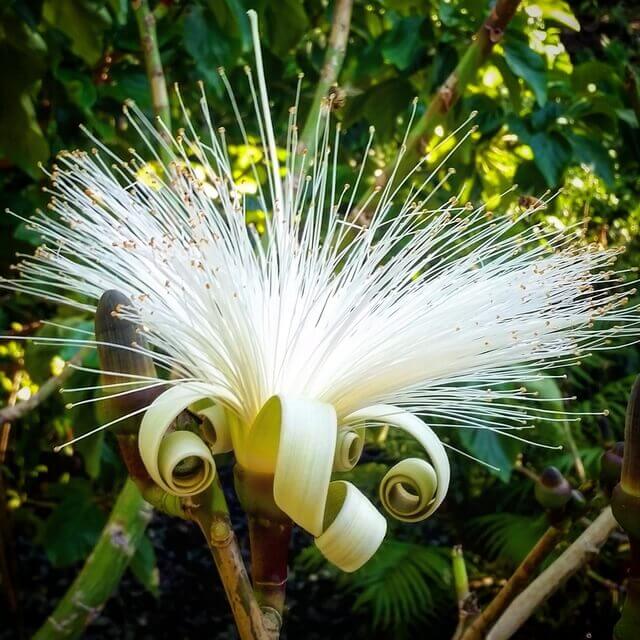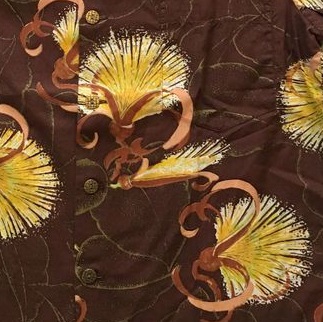Aloha Spotter’s guide to aloha shirts
This page is meant to serve as a basic reference, briefly explaining key attributes to notice on aloha shirts and terminology used when describing them. If you want to learn more, take a look at some of the references mentioned in the reading list.
Shirt construction
Fabric
Aloha shirts are most commonly made from cotton or rayon, though other materials, such as silk, are also used. Somewhere between a purely natural fiber (like cotton or silk) and a purely synthetic fiber (like polyester), rayon is a “regenerated” or “manufactured” fiber, produced by dissolving natural wood pulp and mechanically extruding the resulting substance. Rayon used in aloha shirts is usually soft and silky, with a slightly slick or slippery feel. It’s not as stiff as cotton, and drapes significantly more. Mid-century rayon shirts are considered to be among the most desireable for collectors.


Collar
Most aloha shirts feature a camp collar - a relaxed, structureless collar that lays flat against the shoulders and opens relatively wide, often with a notch that results in a small lapel forming from the folded-back top of the placket. Sometimes with a top closure loop, which is most often purely decorative. Also referred to as a “Cuban collar,” “revere collar,” or “cabana collar.” Older aloha shirts tend to have long, pointy collars, matching the general fashion trends of the time.
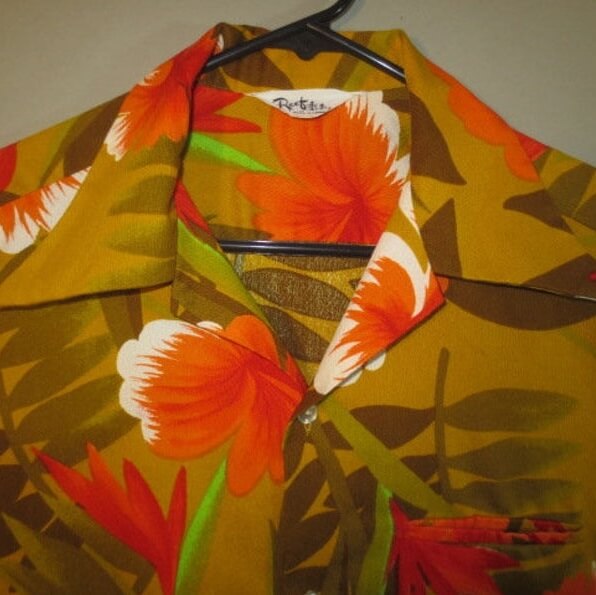
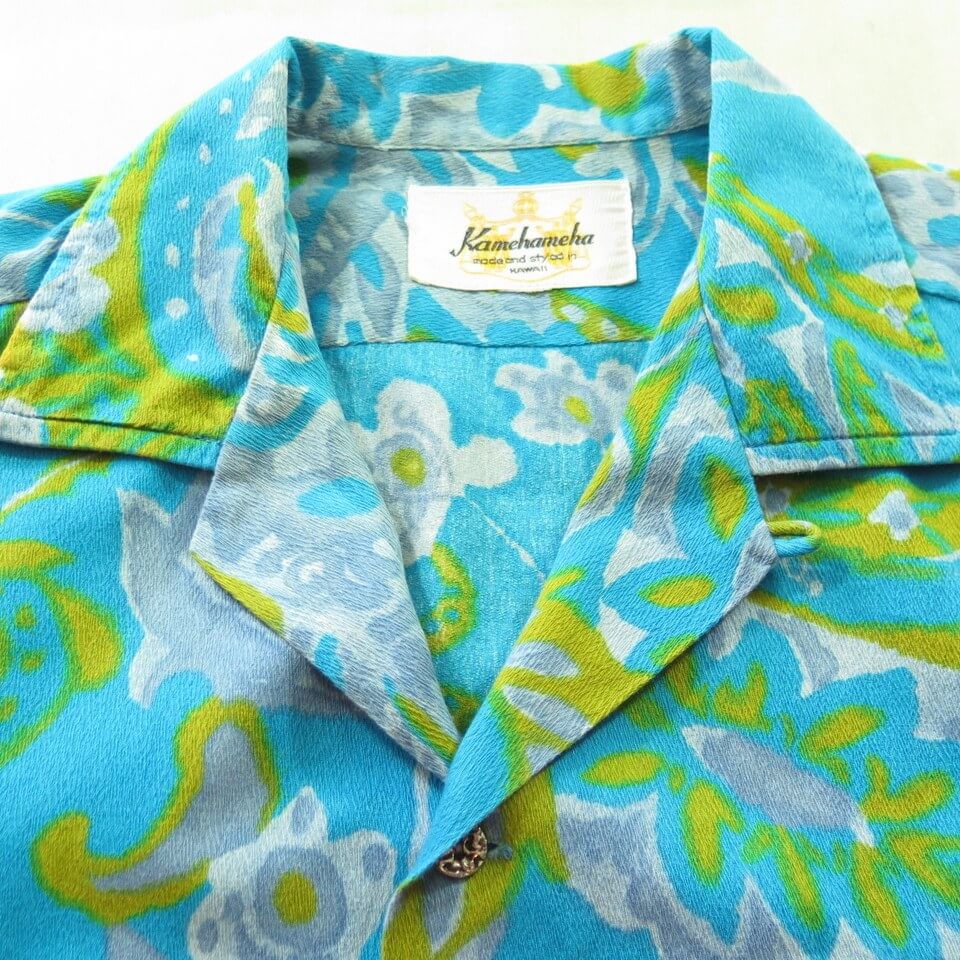
Aloha shirts most commonly feature a single patch pocket on the left side, though two-pocket shirts are not uncommon, and shirts marketed specifically for women will often be made with no pockets. Manufacturers will sometimes go out of their way to incorporate a matched pocket. A matched pocket is a patch or flap pocket cut and positioned such that the print on the pocket’s fabric aligns perfectly with the fabric pattern on the body where it’s attached, thus resulting in an uninterrupted pattern over the whole front of the shirt. Matched pockets are considered an notable mark of quality on aloha shirts, though they were not used consistently – many well-respected vintage labels made shirts without them. Less frequently, one will find shirts that are matched across the front placket, as well.

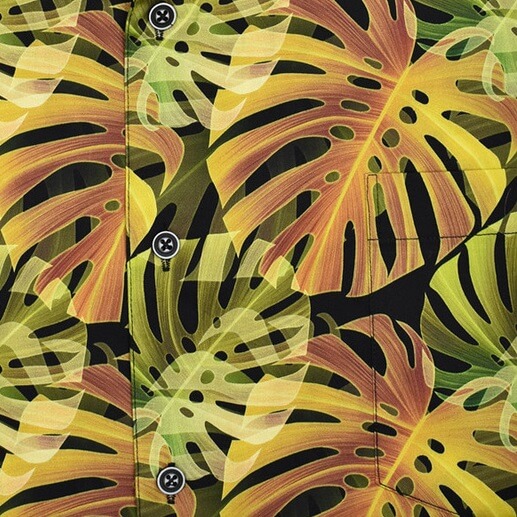
Buttons
Modern commodity Hawaiian print shirts usually have plastic buttons, but a variety of materials have been used over the decades. Coconut buttons are the most highly-prized style, but unique metal, wood, bamboo, shell, or ivory buttons can also help a shirt stand out. Older shirts tend to have fewer buttons (as few as 3 or 4), whereas more modern shirts usually have more (5-6). The orientation of the button holes is another clue to a shirt’s origin - vertical button holes indicate a more modern construction, while horizontal button holes point toward a significantly older shirt.

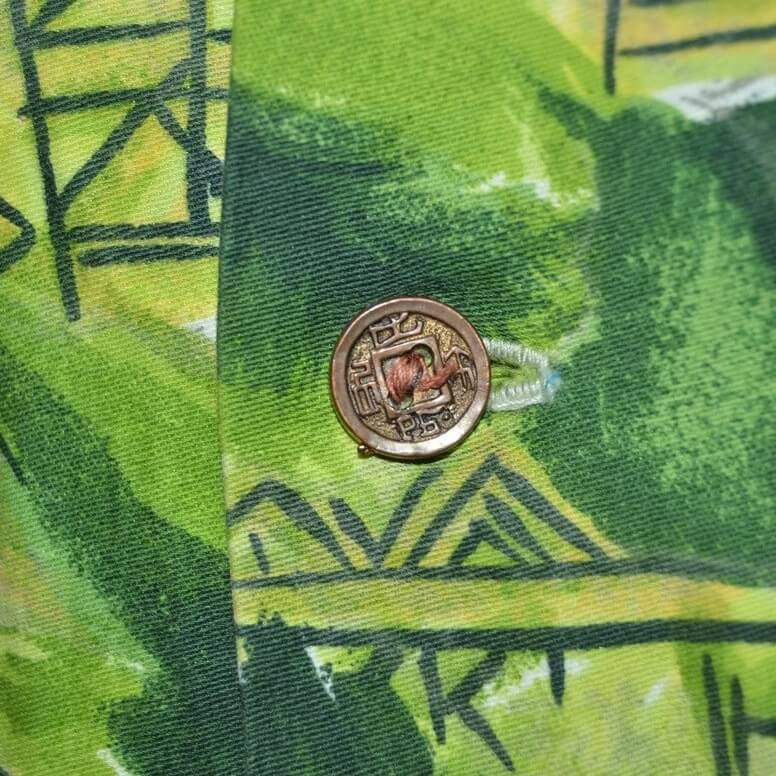
Print families
Hawaiian shirt patterns, regardless of the specific flower, animal, or other motif they depict, fall into a few broad categories.
All-over print
All-over prints are the most common kind of aloha shirt pattern - a repeating design that covers the entire shirt uniformly. Other than overall orientation, there is no particular significance to the location of the cuts and seams used to construct the shirt in relation to the print. When imagining a typical Hawaiian shirt, this is likely what comes to mind.

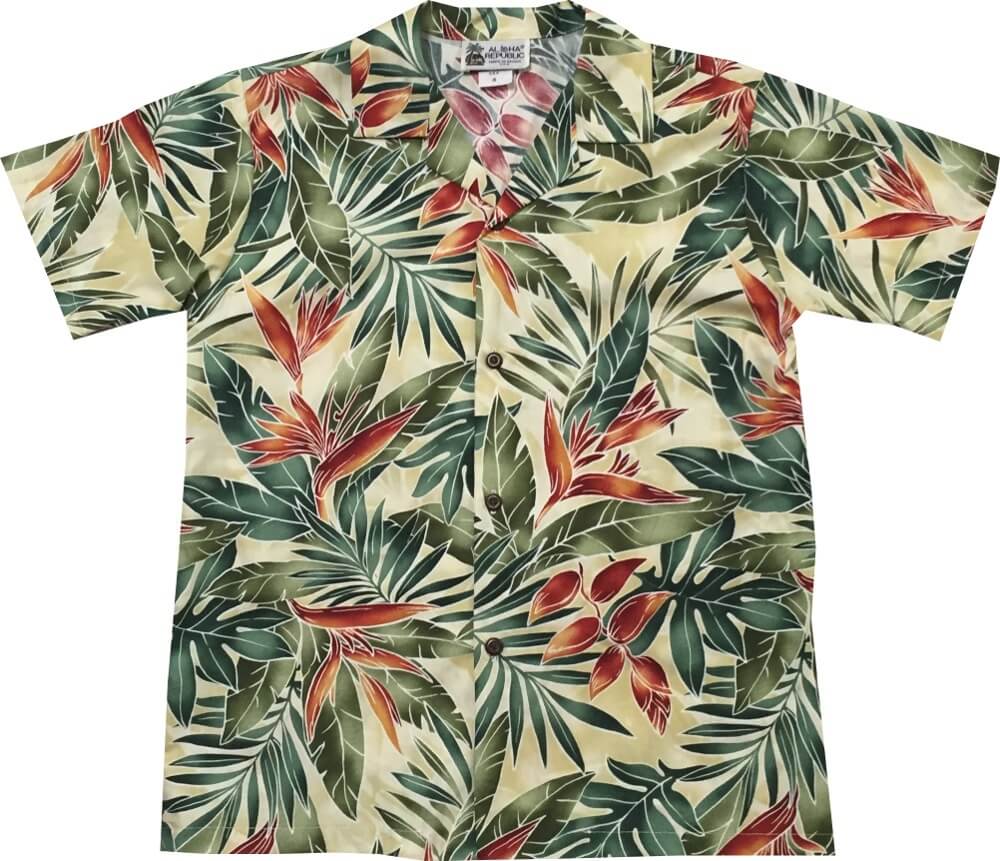
N-way print
Some all-over repeating patterns can be classified into N-way prints – e.g. one-way, two-way or four-way – describing the number of orientations in which the motif is arranged.
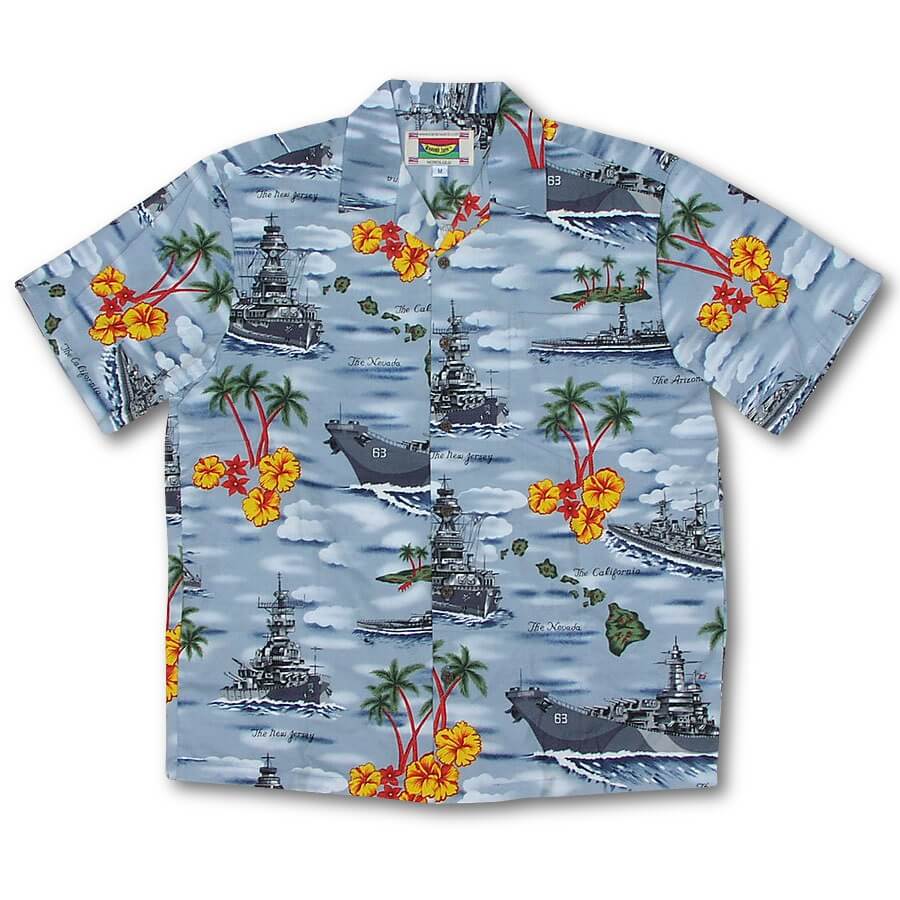
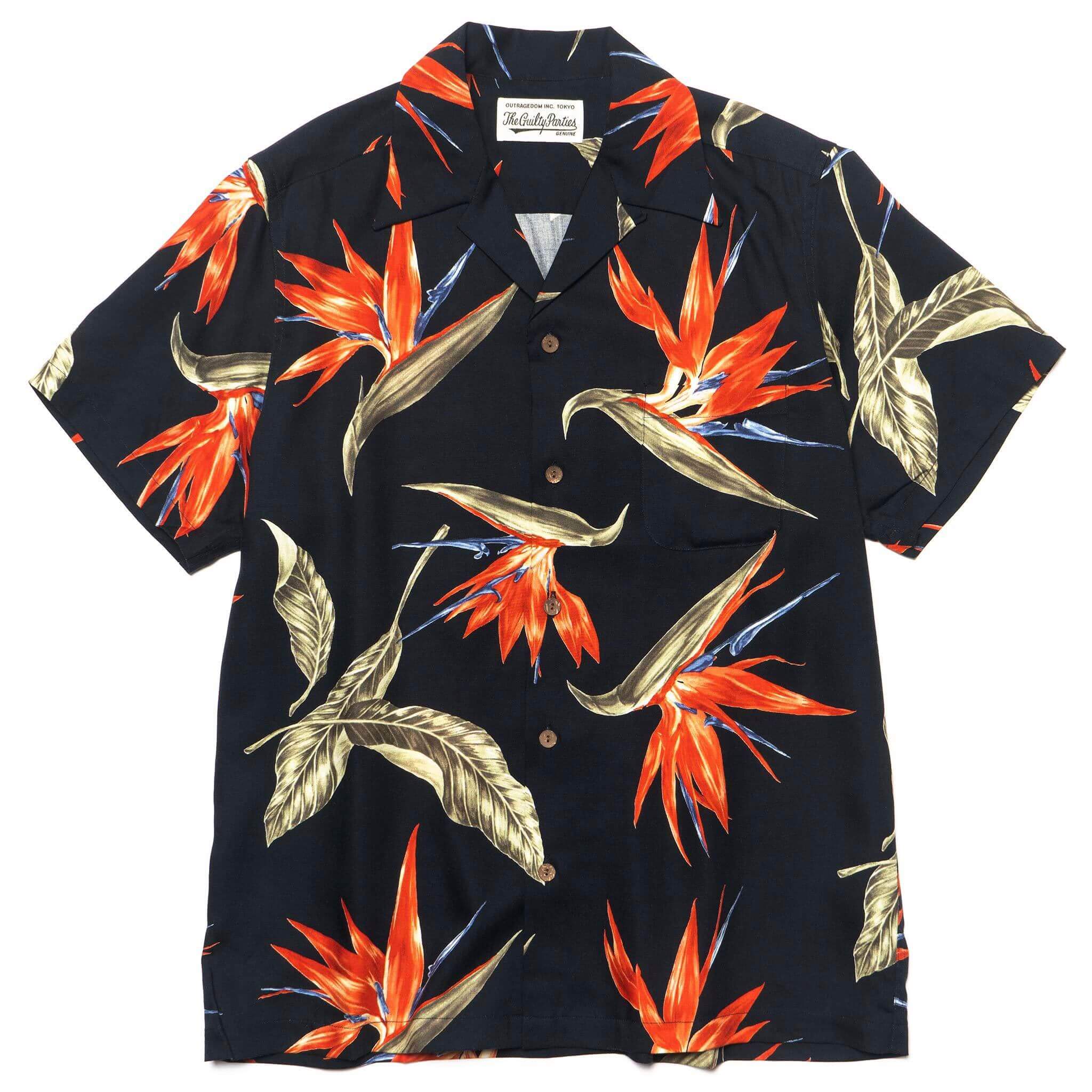
Engineered print
An engineered print is one that requires deliberate positioning of the print pattern relative to the cuts and seams of the shirt. In contrast to a repeating all-over print, elements of an engineered print are intended to occupy specific positions on the finished garment.
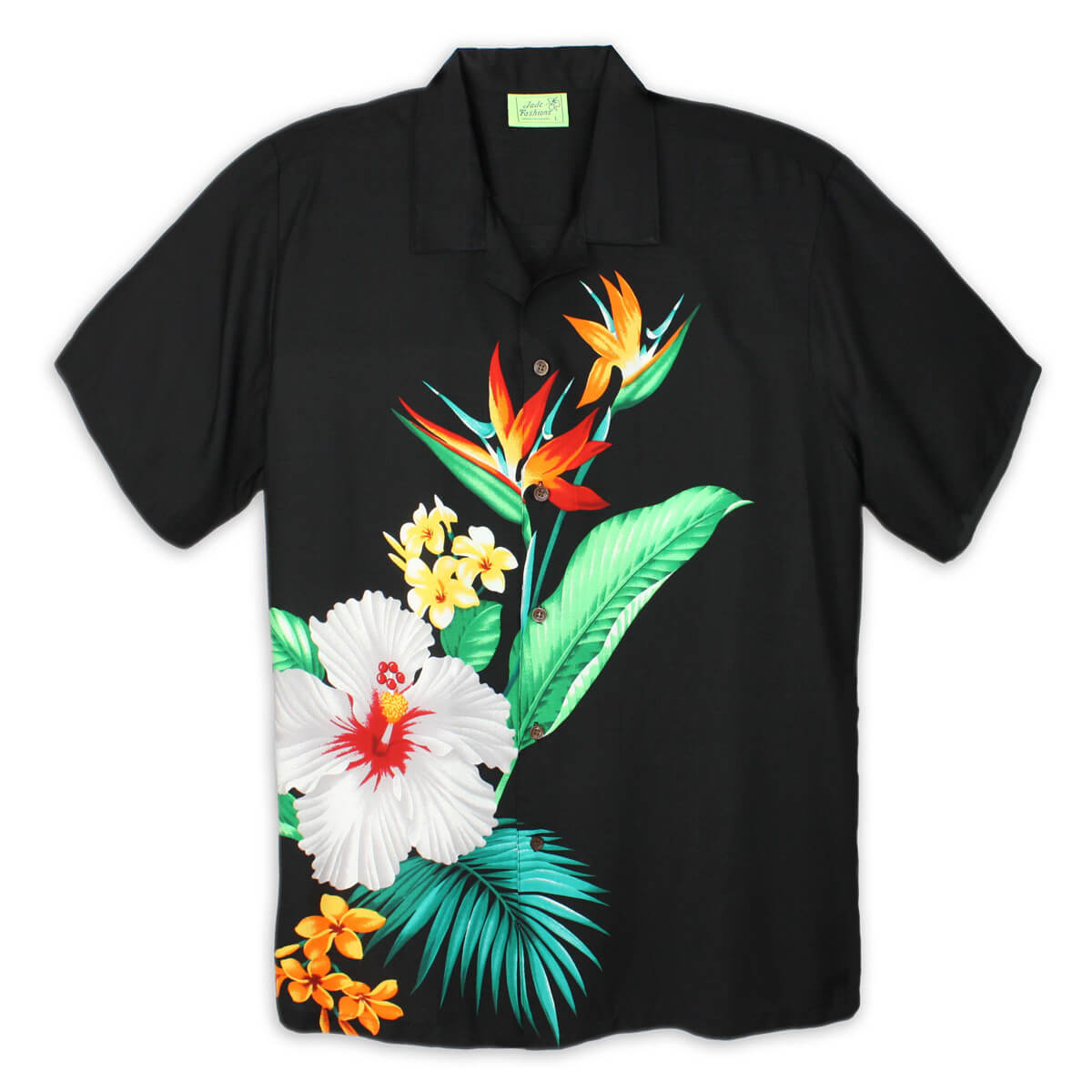
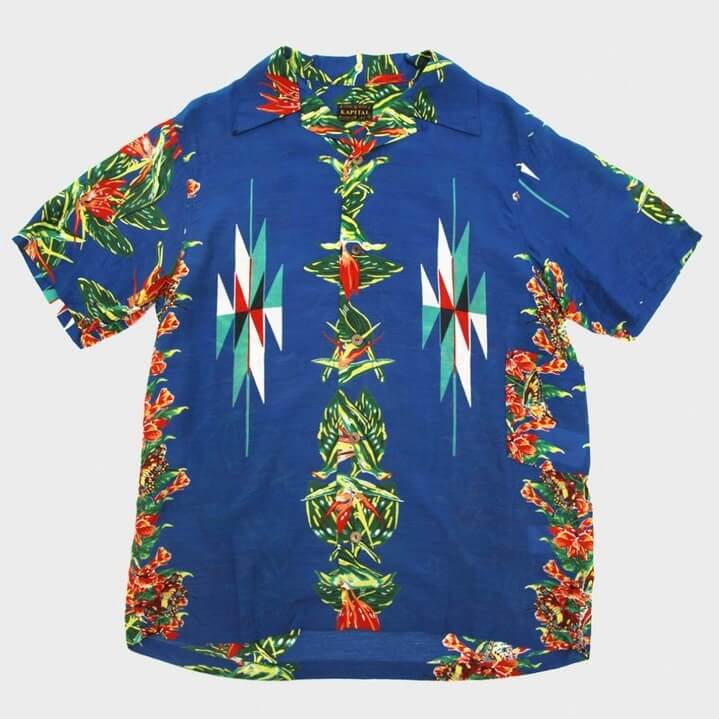
Border and panel prints
Border prints and panel prints are both examples of engineered prints, but nobody seems to agree on which term refers to which pattern. Different books or web references will use the definitions in exactly opposite ways, or use one term to refer to both kind of shirt.
One of these terms refers to a print style characterized by a large design that is anchored around the bottom hem, extending upward across the entire front or back of the shirt. The other term refers to a design that features unbroken up-and-down or side-to-side linear patterns, usually vertical on either side of the front placket.
If forced to choose, it seems to me that there is a weak consensus for “border print” referring to the linear patterns, and “panel print” referring to the large anchored designs.

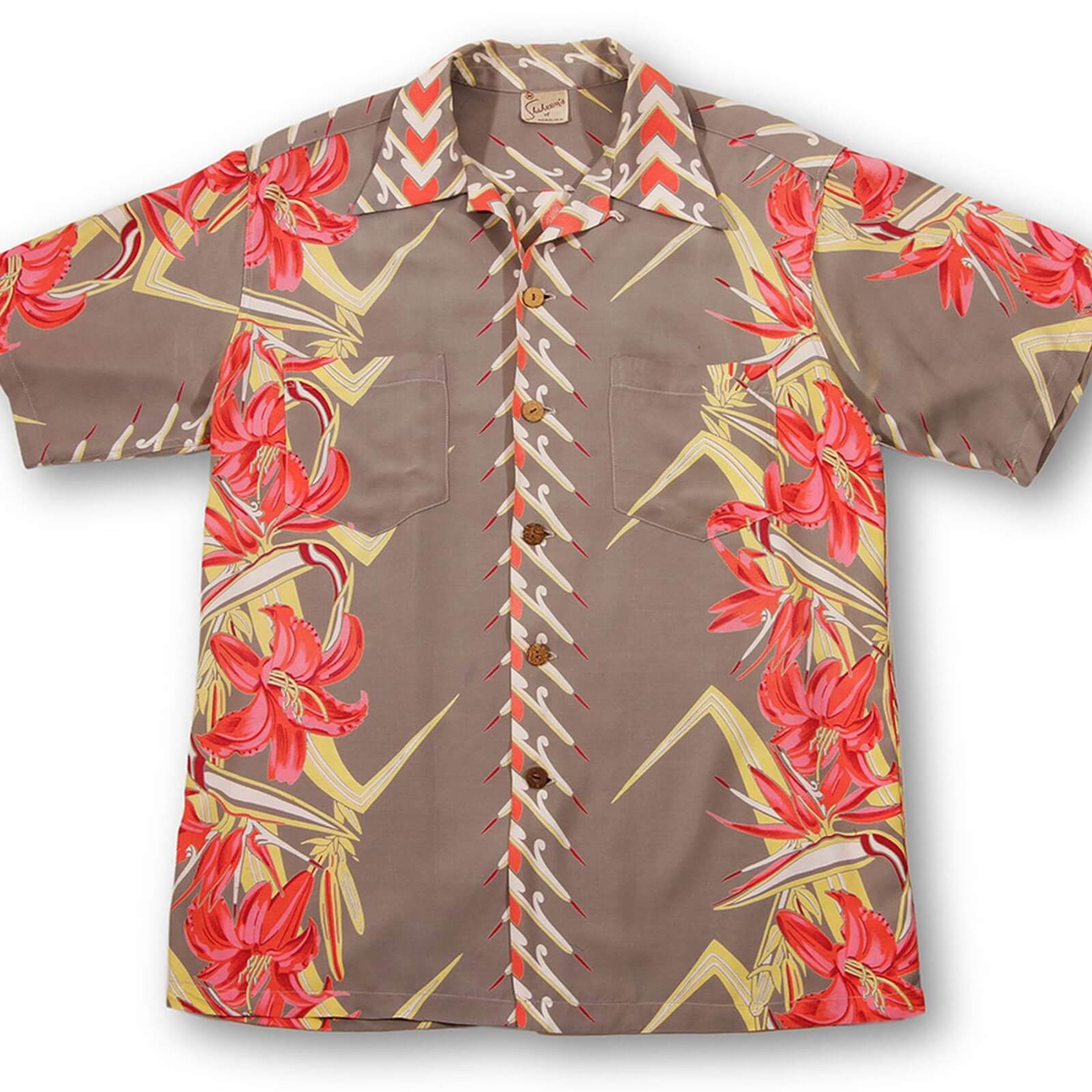
Reverse print
Popular with Hawaiian locals, reverse print shirts feature muted colors and subdued print patterns, with a distinctive “faded” or “washed-out” look. The effect, popularized by the Reyn Spooner label, was originally achieved by printing on one side of the fabric but sewing the shirt so that the other side faced outward.

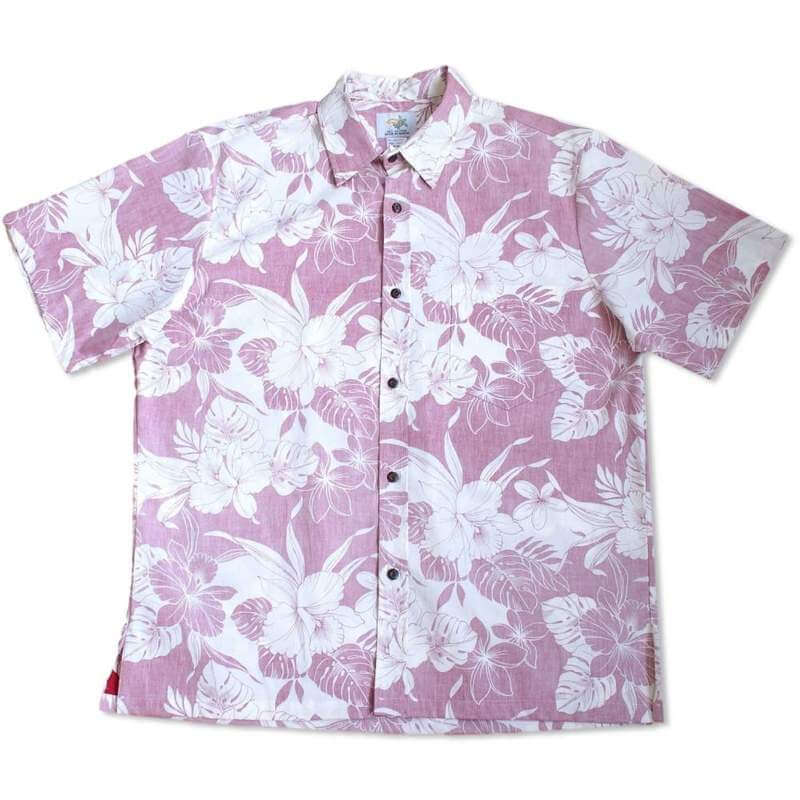
Traditional print styles
There are a handful of traditional repeating print design families worth mentioning individually.
Pareu
Still popular today, pareu (also spelled “pareo”) prints feature solid-color backgrounds and simple white floral patterns. Red and blue are the most common background colors, but green, yellow, or purple are sometimes seen. These designs trace their origin to the patterned cloth used for Tahitian pareu wraps of the 1800s, and for many decades were marketed explicitly as “Tahitian print.” Although associated with Tahiti, such cloth was originally designed, woven, and printed in Europe, then imported to the islands.

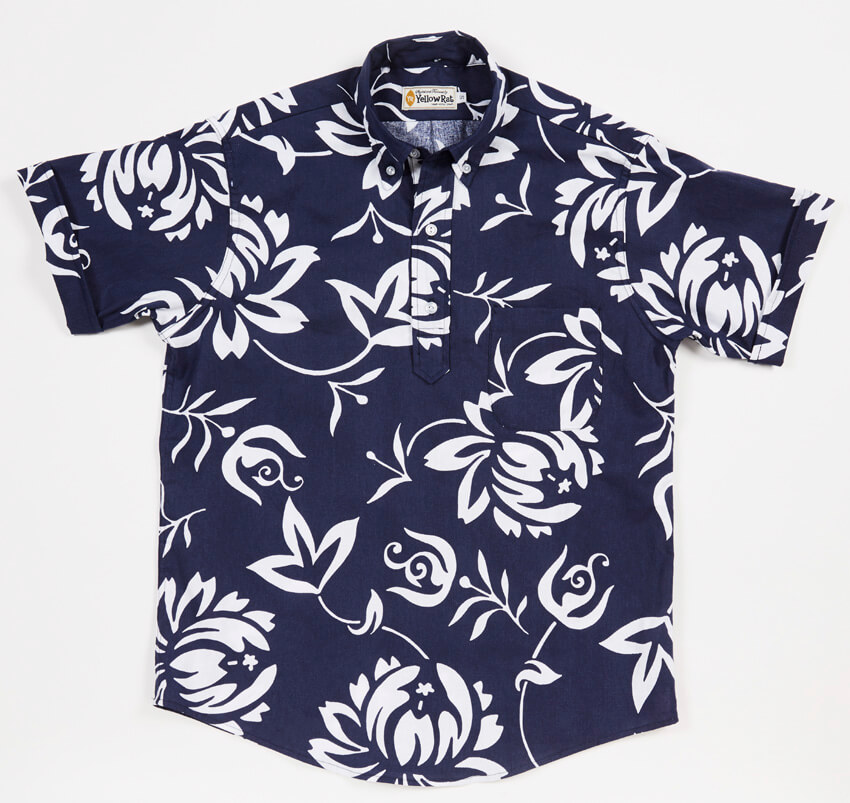
Tapa
Tapa designs are typified by rough, abstract geometric patterns with a Polynesian, tiki, or tribal quality to them. These prints were quite popular in the 1950s, but have become less fashionable in recent decades. Tapa designs are inspired by the traditional patterns found on Samoan barkcloth, and are frequently printed in brown colorways.


Palaka
Characterized by a simple white plaid pattern over a solid background, palaka shirts were the traditional garb of Hawaiian field workers and “paniolo” cowboys. Sometimes referred to as “Hawaiian denim,” the original palaka shirts were cut from thick, durable cloth, and were often long-sleeved. Although their design does not fit with the common notion of what an aloha shirt ought to look like, such garments are considered progenitors to the modern aloha shirt, and are thus included here.
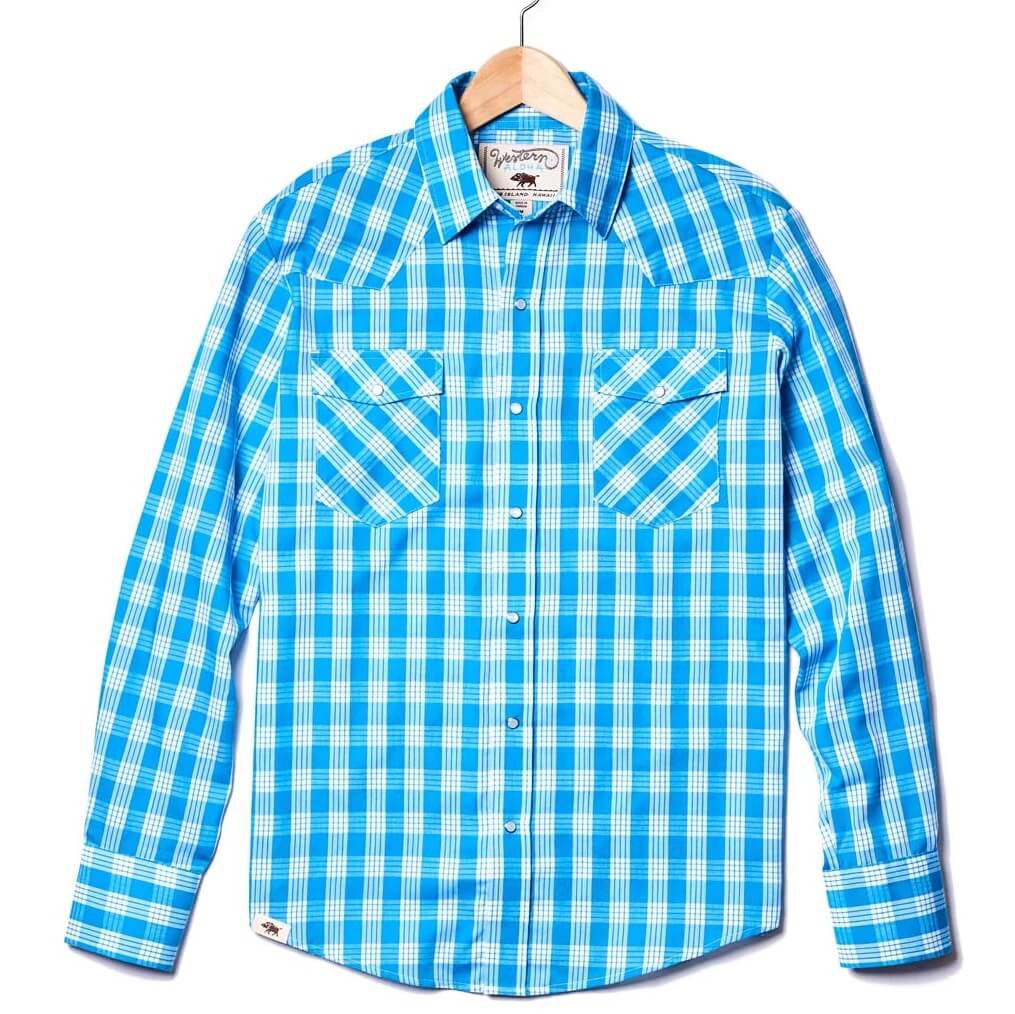

Common floral motifs
Hawaiian shirts are famous for their colorful floral patterns. Casual admirers will instantly recognize tropical motifs such as pineapples, palm trees, bananas, and the like. But there are a number of exotic flora that appear frequently on aloha shirts, yet enjoy less name recognition.
Hibiscus
Perhaps the single most common floral motif on Hawaiian shirts, hibiscus is a genus of tropical flowers consisting of a few hundred individual species. The large, trumpet-shaped flowers can appear in a variety of colors, including red, purple, pink and yellow. The yellow hibiscus, hibiscus brackenridgei, is the official state flower of Hawaii.
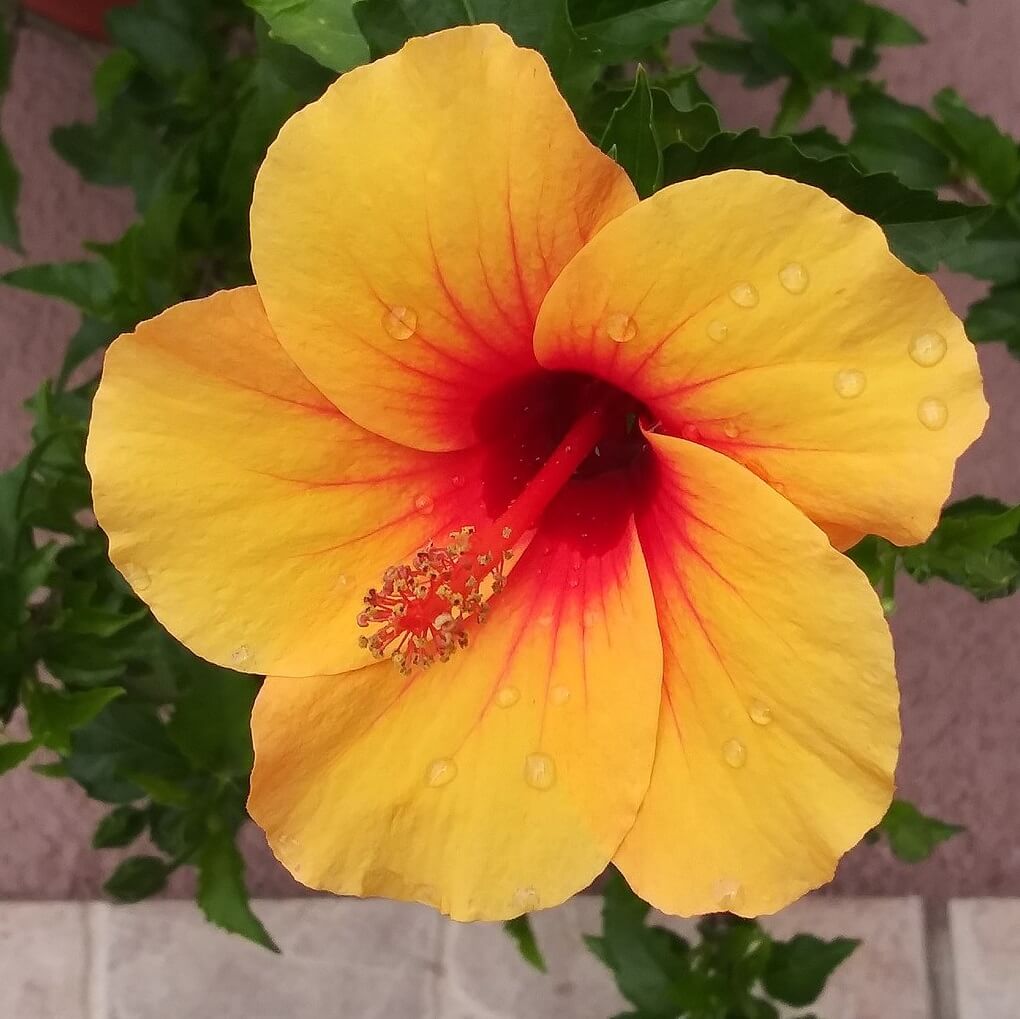

Bird of paradise
Another oft-used motif is that of the stunning bird of paradise flower, Strelitzia reginae, also known as the crane flower. Native to South Africa, the bright, uniquely-shaped flower features orange sepals and radiant blue or white petals, arching upright out of a hard, pointy spathe such that the arrangement strongly resembles the head of a tropical bird.
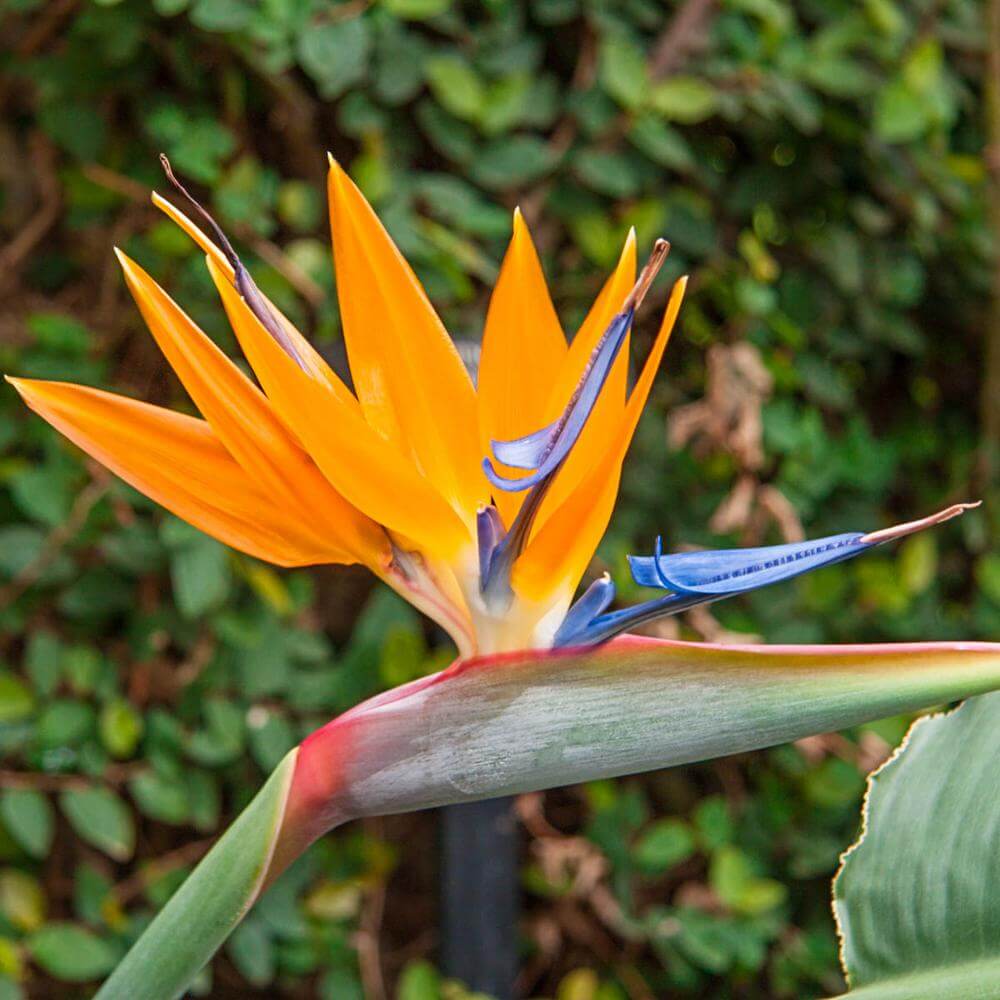
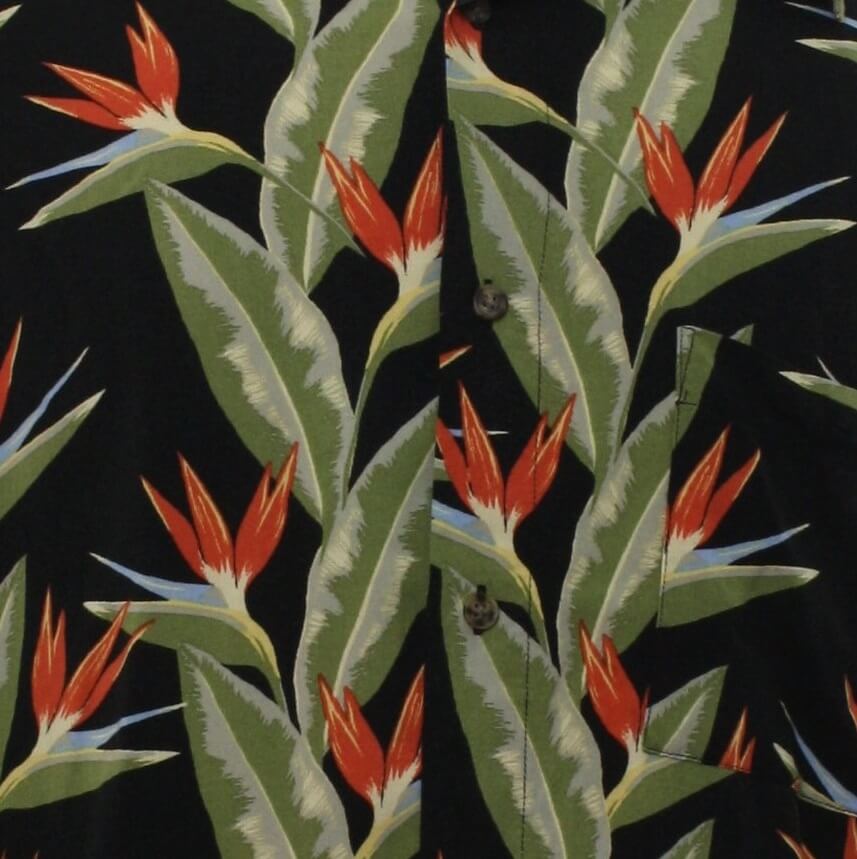
Plumeria
Often present as a secondary motif on aloha shirts, plumeria is a genus of flowering shrubs indigenous to Central America, now commonly found on Pacific Islands. The five-petaled flowers, found in white, pink, red, yellow, and pastel combinations, are quite fragrant, especially at night. Plumeria are also among the most commonly-used flowers used to construct leis.
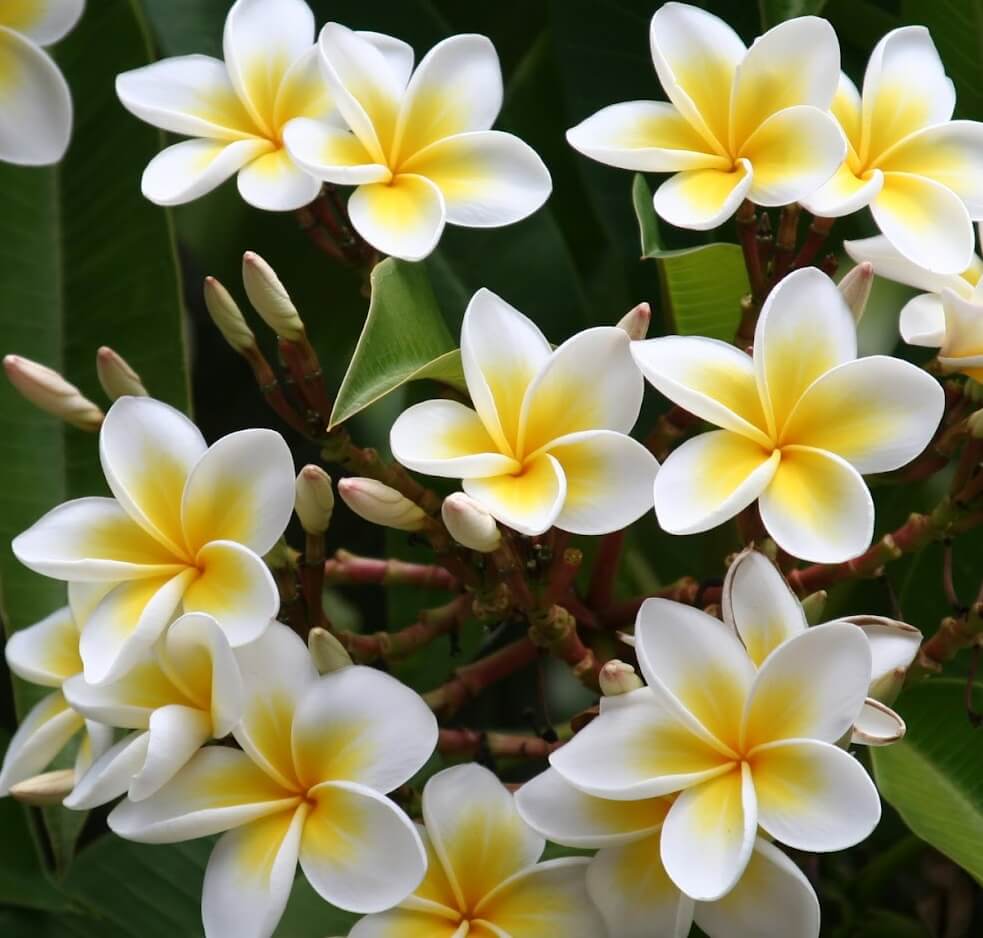
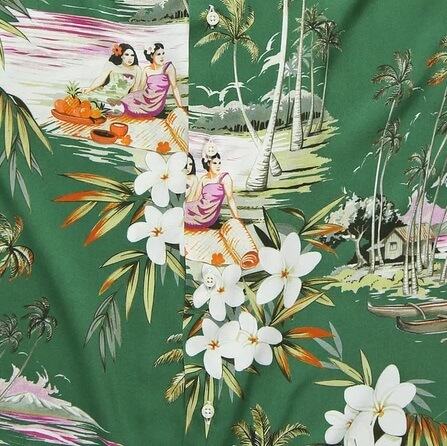
Anthurium
Anthurium is a genus of flowers that feature a distinctive heart-shaped spathe (usually shown on shirts in red, pink, or white) paired with a pointy, protruding spadix.

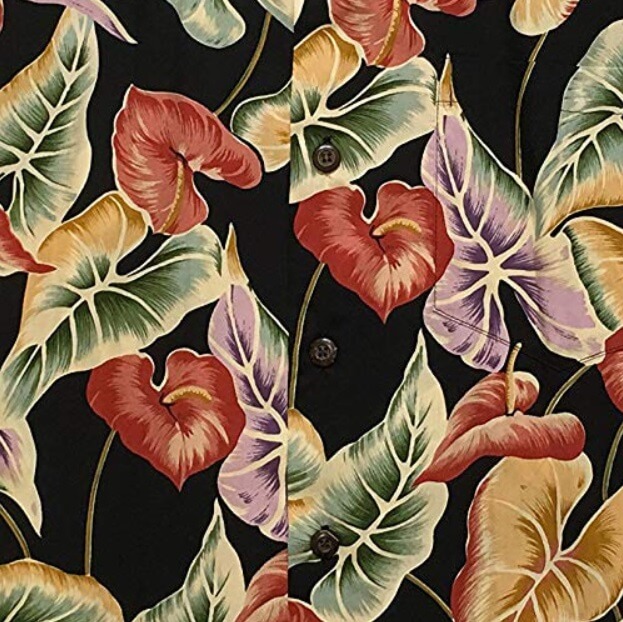
Monstera
Monstera deliciosa is a large plant native to southern Mexico, whose leaves frequently appear as a secondary or supporting motif on aloha shirts. The large, waxy, lobed leaves have a stereotypically “jungle-ey” or “rain forest-ey” look to them. As the leaves develop they will often develop small holes in them, leading to montera’s nickname of “Swiss cheese plant.”


Bombax
Pseudobombax ellipticum, or “shaving brush tree,” is native to South America but commonly cultivated as an ornamental plant in Hawaii. The blossoms, which appear in Spring and last for only a day, resemble an exploding firework - curled-back sepals and a bushel of long, thin, stamens. There are both white and pink varieties. The name pseudobombax, meaning “false cotton”, comes from the soft fibers surrounding the plant’s seeds, which were once used as insulation and fill for pillows.
